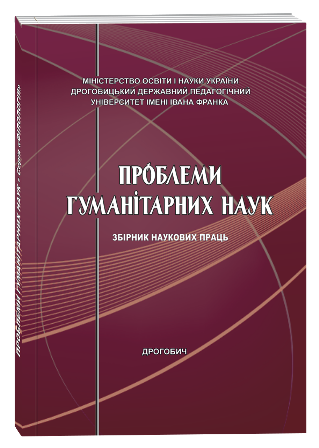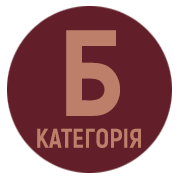THE IMAGE ELEMENT OF THE INDEPENDENCE CONCEPT IN AMERICAN DISCOURSE
DOI:
https://doi.org/10.24919/2522-4565.2022.51.15Keywords:
independence, concept, layer concept model, conceptual metaphor, discourse, corpus.Abstract
Summary. In the given article, the authors represent their mechanisms to define metaphors as reproducing means for the image component of the INDEPENDENCE concept in the modern American mind. The study is conducted within the layer concept model by A.M. Prykhodko, a Ukrainian researcher, on the discourse material (language medium of conscious concept actualization) that is arranged in a mini-model – corpus sample. As a resource base to make a sample, we use the Corpus of Contemporary American English (COCA) because it is the most relevant and frequently refreshable bank of digitized American texts. This system generates a concordance list of the query “independence”. Here, in October 2022, we take 150 random contexts of the INDEPENDENCE concept actualization in American community. The resources are processed via the methodology of defining conceptual metaphors by G. Lakoff and M. Johnson with the metaphorization order parameters by N.V. Tatsenko – the spatial, dimensional, discrete, possessive, artifact, perceptive, personifying ones, etc. The sample analysis resulted in establishing 24 metaphors for the image layer of the INDEPENDENCE concept in American discourse: INDEPENDENCE is PLACE; DOOR LOCK; PHYSICAL BODY; FLAME; TASK; PURPOSE / PRODUCT; RESULT; CREATED OBJECT; DATE; SEPARATED SUBJECT / OBJECT; SUBJECT / BRANCH STATE; PROPERTY; VARYING OBJECT; COMPLEX OBJECT; RESOURCE / TOOL; MECHANISM / MACHINE; LIVING ORGANISM; HUMAN; PERCEIVING, FEELING / IMAGINING, ANALYZING, ADMIRING or DISDAINING OBJECT; MIND CONCLUSION. Additionally, further research prospects comprise check and revision of the obtained results via broader discourse samples from the COCA corpus. One can study the notion and value elements of the INDEPENDENCE concept in American discourse to reproduce its integral ontology. We may also represent the layer INDEPENDENCE model in Ukrainian discourse to compare world outlook from perspectives of Ukrainian and American populations. Besides, it will be quite reasonable to research the INDEPENDENCE concept ontology within the field or modus formats via respective methodologies.
References
Корпусна вибірка контекстів зі словом independence як іменем концепту НЕЗАЛЕЖНІСТЬ. URL: https://drive.google.com/file/d/1m0bTuUmk6rk5DSzDYTZHYzhC3w7l4Kmh/view?usp=sharing.
Приходько А. Н. Концепты и концептосистемы. Днепропетровск: Белая Е.А., 2013. 307 с.
Степанов В. В. Образний компонент концепту СТІЙКІСТЬ : корпусне дослідження американського дискурсу. Науковий вісник Міжнародного гуманітарного університету. Серія «Філологія». 2022. № 56. С. 135–140. DOI : https://doi.org/10.32841/2409-1154.2022.56.30.
Таценко Н. В. Емпатія в сучасному англомовному дискурсі : когнітивно-синергетичний вимір: дис. … доктора філол. наук : 10.02.04. Харків, 2018. 460 с.
Connell J. The 2020 New Caledonia referendum. The slow march to independence? Journal of Pacific History. 2021. Volume 56. Issue 2. P. 144–160. DOI : https://doi.org/10.1080/00223344.2021.1912584.
Corpus of Contemporary American English (COCA). URL : https://www.english-corpora.org/coca.
Ergun A. Citizenship, national identity, nation building in Azerbaijan. Between the legacy of the past and the spirit of independence. Nationalities Papers. 2022. Volume 50. Issue 4. P. 813-830. DOI: https://doi. org/10.1017/nps.2020.81.
Krotofil M., Michaluk D. Towards the independence of Ukraine. Biuletyn Polskiej Misji Historycznej. 2022. Issue 17. P. 357–366. DOI : https://doi.org/10.12775/BPMH.2022.014.
Lakoff G., Johnson M. Metaphors we live by. Chicago : University of Chicago Press, 2003. 256 p.
Liu W. From independence to interdependence. Taiwan independence as critique, strategy and method toward decoloniality. American Quarterly. 2021. Volume 73. Issue 2. P. 371–377. DOI : https://doi. org/10.1353/aq.2021.0018.
Morozova O. Monomodal and multimodal instantiations of conceptual metaphors of Brexit. LEGE ARTIS. Language Yesterday, Today, Tomorrow. 2017. Volume 2. Issue 2. P. 250–283. DOI : https://doi. org/10.1515/lart-2017-0017.
Negura P. Moldova’s thirty-year search for independence. Current History. 2021. Volume 120. Issue 828. P. 268–273. DOI : https://doi.org/10.1525/curh.2021.120.828.268.
Oliynyk N., Shevchenko I. Conceptualization of ECONOMIC CRISIS in discourse : from the Great Depression to the Great Recession. Advanced Education. 2016. Issue 6. P. 76–81. DOI : https://doi. org/10.20535/2410-8286.78867.
Palani K., Khidir J., Dechesne M., Bakker E. Strategies to gain international recognition: Iraqi Kurdistan’s September 2017 referendum for independence. Ethnopolitics. 2021. Volume 20. Issue 4. P. 406–427. DOI : https://doi.org/10.1080/17449057.2019.1596467.
Shinar C. Ukraine’s struggle for independence. European Review. 2022. Volume 30. Issue 1. P. 43–57. DOI : https://doi.org/10.1017/S1062798720001076.
Sijstermans J., Brown Swan C. Shades of solidarity. Comparing Scottish and Flemish responses to Catalonia. Regional and Federal Studies. 2022. Volume 32. Issue 2. P. 161–181. DOI : https://doi.org/10.1080/13 597566.2021.1881064.



